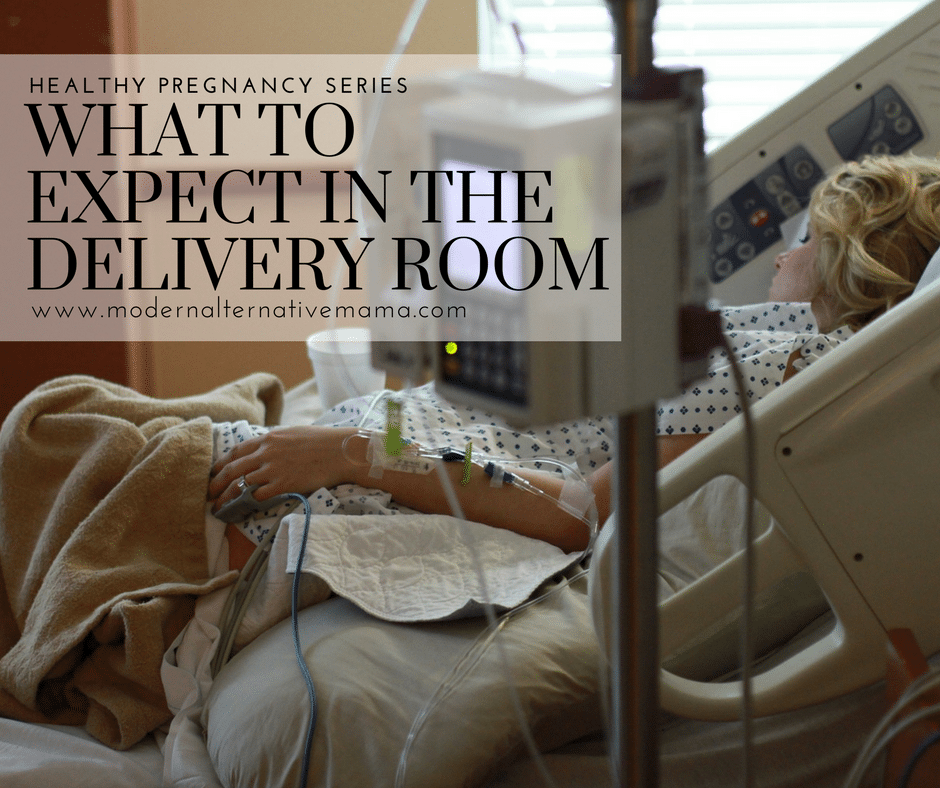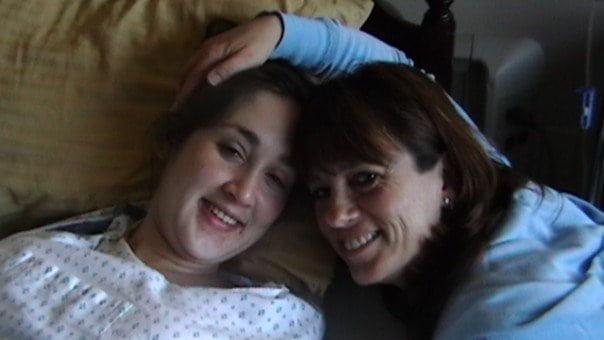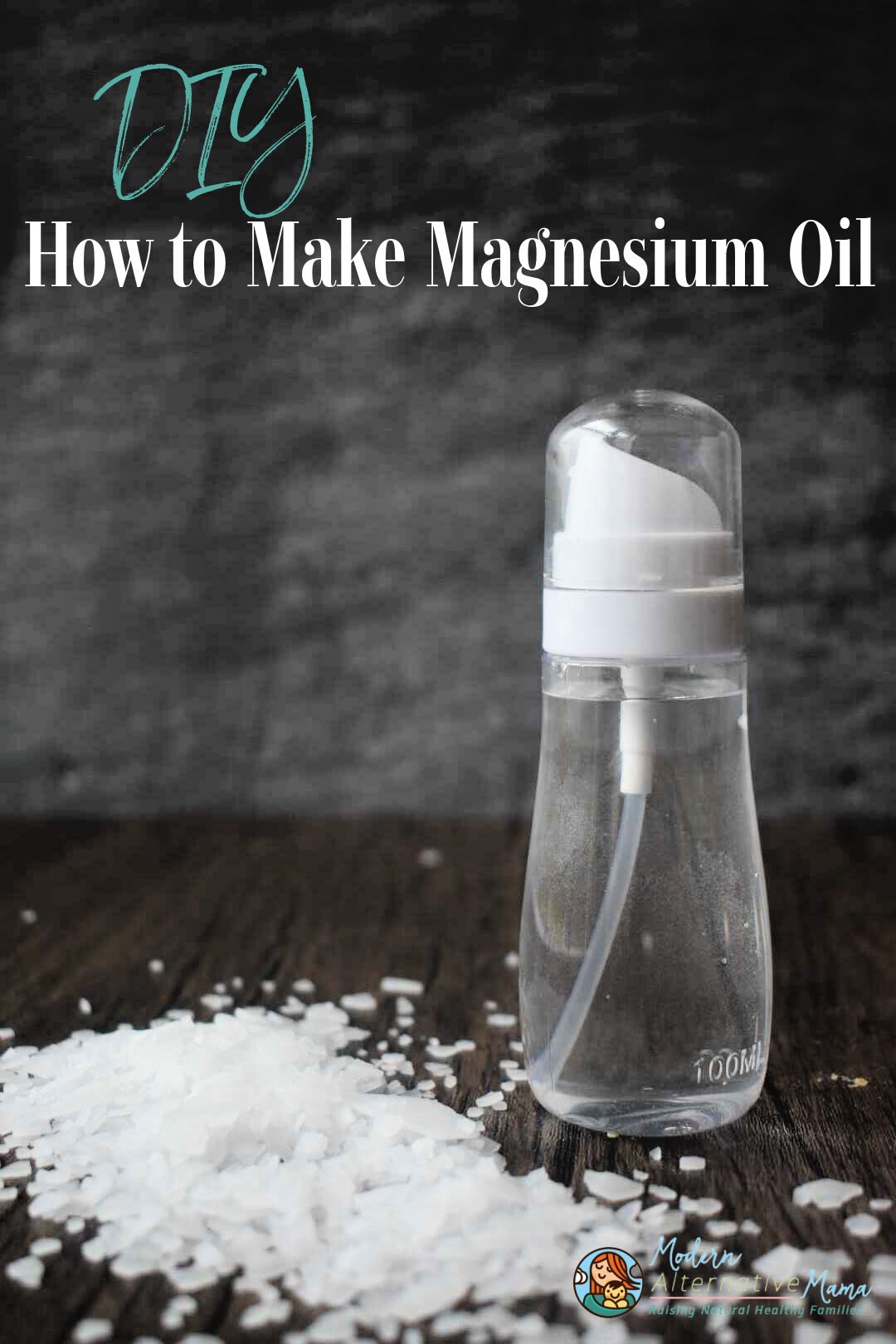Every successful pregnancy (i.e., ones that don’t end in miscarriage, a very unfortunate and emotional circumstance) eventually ends in the delivery room. If you’re expecting your first baby, it’s hard to know what this experience is really like…until you’re there. But, it’s a good thing to learn as much as you can about it before you’re there, so that you’re prepared for the reality. As much as possible, anyway!
Preparing for the Delivery Room
If you’re planning to give birth in a hospital or birthing center, you will need to pack a bag to go with you. Some women worry about this a lot, and pack a bag by the time they start their second trimester! You really don’t need to do it this early, though. Around 32 – 34 weeks, it’s time to pack, since only a few weeks later you could have your baby at any time! (But…if you don’t, don’t worry. First-time moms, especially, will not have their babies until around 41 weeks, if they are not induced sooner.)
What should you bring?
- Clothes to wear home (loose ones), including a nursing bra
- Clothes for baby to wear home
- Diapers for baby, if you’re cloth diapering (if you’re using disposables, at least at first, the hospital will provide them)
- A hat/coat for baby, if necessary
- Shower supplies/toiletries (toothbrush, toothpaste, contacts, shampoo, conditioner, body wash)
- A car seat for baby to go home in
- A copy of your birth plan (if you have one)
These are the necessities. As in, you will use them. Some women also like to bring:
- A book or magazine to read
- Cards and a pen (to write thank-you notes for any gifts you receive)
- Favorite music
- Candles (if allowed; check the hospital’s policies)
- Your own pillow
- A special blanket for the baby
- A pacifier (if you plan to use one)
- Some snacks for you and your husband
- A camera or video camera
There are plenty of things you don’t need. Don’t overpack. Unless something goes wrong, you will only be there a day or two. And in that case, you can send your husband home to get the things you need. Just be very specific — a few husbands (not mine!) have been known to bring back lacy bras and high-heeled shoes when asked for “clothes to wear!”
It important to pre-register at the hospital where you will deliver so that you don’t have to do the paperwork while you are in labor. There’s nothing worse than standing at the check-in window and trying to fill out papers and answer questions while you’re having constant contractions.
It’s also a good idea to map your route to the hospital, and even practice driving it a few times (your husband needs to drive it, not you, as you won’t be driving while in labor!) especially if it is in a ‘new’ place. You don’t want to have to stop and ask for directions in labor, and you’ll be very little help to your husband at that time!
Once You’re in Labor
When you’re sure (or pretty sure) that this is “it,” there are a few things you need to do immediately:
- Call your doctor or midwife and let them know you’re heading in
- Call your doula, if you have one, and let her know to come too
- Grab your bag — make sure your birth plan is in it! (Bring multiple copies, too)
At the hospital, you’ll still have to answer a few questions and have your driver’s license handy so they can sign you in — unless you’re literally going to deliver the baby right that minute.
Once you’re signed in, you’ll be taken back to triage. This is a room with several beds in it, where the nurses keep you temporarily to check on your progress. They’ll note how far you are dilated and effaced, and hook you up to a contraction and fetal heart monitor. If you are fairly far along and/or progressing quickly, you won’t stay here long — you’ll be moved to a labor/delivery room. If you are not far along or not progressing much, you may be sent to walk the hospital (in hopes of speeding things up) or sent home. Most hospitals will not keep you if you are dilated less than 3 cm.
Now — at home, you won’t do any of this, of course. You’ll go about your normal activities or rest until you feel the need to stop and concentrate on contractions. When you are in regular, intense labor (contractions every five minutes or less), you’ll want to call your midwives to come, if you haven’t already. It’s a good idea to give them a heads up as soon as contractions start and/or your water breaks, though, in case they need to arrange childcare.
The Delivery Room
Once you are settled into your very own labor room, several different things can happen. You will probably be hooked up to an IV, or at least a “hep lock” (an IV line which has nothing in it; it’s just in case of an emergency later). Tell them immediately and give them a copy of your birth plan if you don’t want this. It is standard procedure in most hospitals. It is not a bad idea to have an IV with a saline solution if you are nauseous or having trouble eating or drinking, or if you are not allowed to — especially if your labor is long. Most hospitals do restrict food/drink.
You may be offered pain medication at this point. Let them know how you feel about this (do you want it? do you want them to offer it to you, and under what circumstances? are you against it? It should say this on your birth plan if you have one).
The staff will want to monitor your baby, at least briefly, to make sure everything is going well — that your contractions are regular and strong, and that your baby’s heartbeat is strong and normal. A heart rate that drops during contractions can be cause for concern (though sometimes just changing positions fixes this, so don’t panic). Once your baby has been checked, some hospitals will let you get up — if you haven’t had an epidural.
At this point, you can walk around, sit on a birthing ball, use a shower or tub (if available), or do whatever feels comfortable. Usually, there is a TV and/or a radio available. There will also be a couple chairs, for whoever is supporting you. Typically you will be allowed to have two people with you at a time.
Your support people are your advocates. If any questions come up — such as over procedures you may or may not want — your support people should talk to the hospital staff for you, as you are typically not going to be in a position to do so. Make sure they are prepared for this role (experienced doulas will know this).
You will be checked about once an hour. That is, the staff will want to hook you up to a contraction and fetal heart rate monitor (if you’re not doing it continuously) and check for dilation. If you do not want such frequent checks, or would prefer they check your baby with a doppler — say so ahead of time and write it in your birth plan. This is one of the few circumstances under which even women opposed to a doppler will allow it because it is really hard to remain still and quiet while you are in active labor!
Some doctors will want to break your water to “speed things along.” Make sure that this, too, is on your birth plan, if you have a preference. Please know that once your water is broken, it can make your contractions stronger, and it also increases the risk of infection especially during internal exams.
Be aware that many hospitals want to do internal fetal monitoring once your water has broken because it is “more accurate.” They actually push the monitor slightly into the baby’s skull. Read up on this practice and be informed so that you can make a decision ahead of time on whether or not you will allow this (I would not).
At this point, it’s really just a waiting game! You’ll be continuing to move around, or rest, or get in the water — or whatever it is you want to do — while the staff checks on you occasionally. As long as things are progressing normally, they should be pretty hands-off (and this is largely dependent on your doctor or midwife…another good reason to make sure you are a good fit before you make it here!).
The Final Phase
Eventually, it will be time to push! Minutes to hours before your baby arrives! Bad news — many first-time moms push about two hours before their babies are born. This can range, however, from ten minutes to three hours (after this point, usually some type of intervention is suggested — although the rare woman may push quite a bit longer than this). Just because it is your first baby does not guarantee you will push a long time — I pushed less than ten minutes — but be prepared for the possibility.
In most hospitals, you will be situated on a reclining table with your bottom in the air and your feet in stirrups (or held back by nurses). This is the easiest position for doctors. However, it is just about the worst position for you. Your pelvic opening is about 30% smaller, and your baby actually has to fight gravity and move slightly uphill to be born.
If possible, request to be sitting up (on the edge), squatting, on your side, or on your hands and knees. All these positions allow more room for the baby, especially the last two. Using different pushing positions can lessen the need for episiotomies, the risk of tearing, and the need for vacuum extraction or forceps during delivery.
Pushing when you feel like it — instead of when you’re “guided” to do so, usually when someone is counting to 10 — is also safer, and less likely to result in tearing or other injuries, and more effective. All women have a strong, uncontrollable urge to push when it is time (though women who have had epidurals won’t feel this), and going with your own instincts and urges usually makes things easier. Given a normal situation, of course.
For many women, pushing is “two steps forward, one step back.” A lot of babies will slide back a bit in between contractions. That is okay and expected. Soon enough, your baby will be born!
The Aftermath
Once the baby is delivered, all kinds of things happen. You’ll want to hold and “meet” your baby; the hospital will want to clean, weigh and measure him; there are various other “newborn procedures” that the hospital will want to do. You’ll need to be cleaned up and stitched if you had a bad tear or episiotomy.
We’ll discuss these “newborn procedures” in another post, as well as what happens if you end up with a c-section. Clearly, this post represents an uncomplicated vaginal delivery, which is not always what happens. So, we’ll be addressing special circumstances in the future!








I would add a Boppy to the list of things to bring if you plan to breastfeed. Pillows did not help me in any way and without being able to get your baby in the proper position and the proper height you are setting yourself up for frustration and back pain! I know some women don't use them, but it wouldn't hurt to have it in the car!
I always opt for natural labor, so I bring my "coping" kit: a tennis ball to have my husband rub on my back, a rice heating pad to heat up in the hospital, some snacks and drinks (I sneak them… a woman can't labor with no liquids!), homemade massage oil, gum, an abs ball to sit on, etc…
Thanks for this very informative and helpful post. I pushed for around 2 hours with my first, but I think it really would have helped the progression if I would have tried a different position, rather than flat on my back. Unfortunately, our hospital is horribly "by-the-book-only"… And the nearest birth center is over 2 hours away. And I haven't been brave enough to consider home birth yet, so I'm rather stuck right now… 🙁
And next time, I'm totally sneaking in some snacks. They wouldn't let me eat anything, and after 12 hours of lhospital labor (I labored the first 20 hours at home. yup, that's right 32 hours total…), I was weak, shaky, and STARVING. In fact, I actually threw up because of the hunger. So, I'm taking snacks next time for sure!
What kind of bag do you use as a birth/hospital bag?